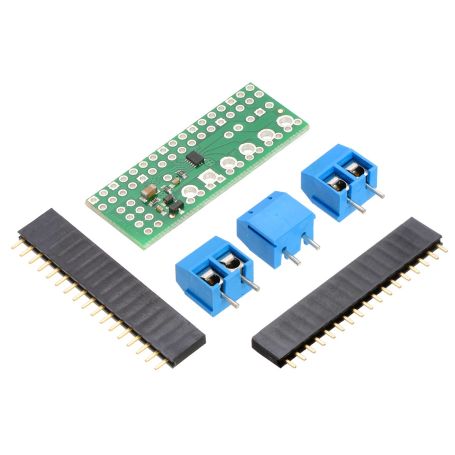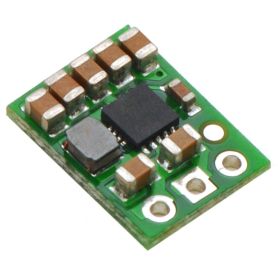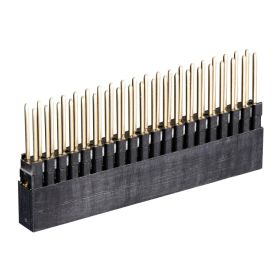Drive up to 2 motors with the DRV8835 for Raspberry Pi
Motor controler for Raspberry-Pi
- 2 motors
- 1.5 to 11V
- 1.2A (1.5A peak)
- DRV8835 controler
Payments are secured by LyraCollect, a French payment collection company.
It is possible to delivered to your home, to a pick-up point or picked up by appointment at MCHobby
We prepare, pack and ship your orders with great respect and care.
Take control of 2 moteurs from the Raspberry-Pi GPIO
Here is a very compact expansion board to plug directly into the GPIO connector of the Raspberry Pi. It offers a simple and affordable solution for driving a pair of small DC motors (collector motors). The board incorporates a DRV8835 integrated circuit (motor controller) operating with a voltage of 1.5 V to 11 V, making it an excellent option for controlling low voltage motors. The board is capable of delivering 1.2A continuously (and 1.5A peaks) for each of the two motors, or 2.4A (3A peak) for a single motor when the two channels are connected in parallel.
This motor controller kit and its Python library makes it really easy to control a pair of motors (in both directions) from a Raspberry Pi. That expansion board implements the DRV8835 from Texas Instruments which is a very practical double H-bridge to take control of two small low voltage motors (between 1.5 and 11 V). The controler is capable of delivering 1.2 A continuously over each channel (with 1.5Amp current peaks for a few seconds). If you need more power (more current), it is possible to connect the two H-bridges in parallel to deliver twice as much current on a single motor.
The board is assembled with SMD/SMD components, DRV8835 driver and FET transistor to protect the board from accidental reverse voltage; The kit includes the connector for interfacing the card to Raspberry-Pi and terminal blocks for connecting motors and power.
The terminal blocks and GPIO connector must be soldered onto the board (see assembly notes in the tutorial). This should not takes long
Used GPIOs
The board uses GPIO pins 5, 6, 12, and 13 to control the motor driver. The card uses the hardware PWM outputs of the Raspberry Pi. It is however possible to modify these default connections if they are not suitable.
Even though the DRV8835 itself is capable of operating with a minimum voltage of 0 V, reverse voltage protection limits the minimum voltage to 1.5 V. If you need a lower motor voltage, you may consider using the DRV8835 with a motor power connected directly to the pin VMM.
Features
- H-Bridge based motor controller: can drive two DC motors (or a single stepper motor)
- Motor voltage: 1.5 V to 11 V
- Logic voltage: 2 V to 7 V
- Output current: 1.2 A per motor (1.5 A peak)
- Motor output can be puts in parallel to bring the current up to 2.4 A for a single motor (or peak at 3A)
- PWM speed control up to 250 kHz (ultrasonic frequencies are less loud)
- Two interface mode:
- PHASE/ENABLE: default mode. 1 pin for rotation direction, the second pin for speed control (PWM).
- IN/IN: le output state are the same as input pins
- Adding a S7V7F5 DC/DC regulator (not included) would allow to power the Raspberry-Pi Zero from the motor controler board
- The Python library will helps to quickly starts with this expansion board.
- Used GPIO pin can be change (if needed).
- Reverse voltage protection (on motor power connector)
- Under-voltage protection (board locking), over-current protection and over-heat protection
Content
For each order, you will receive the board, the GPIO connector (which you can also replace with a Stacking Header 40 broches), the terminal blocks to connect the motors.
Raspberry Pi, Motors and power supply not included.
Tutorial
- Manufacturer product sheet (English)
- Python library















